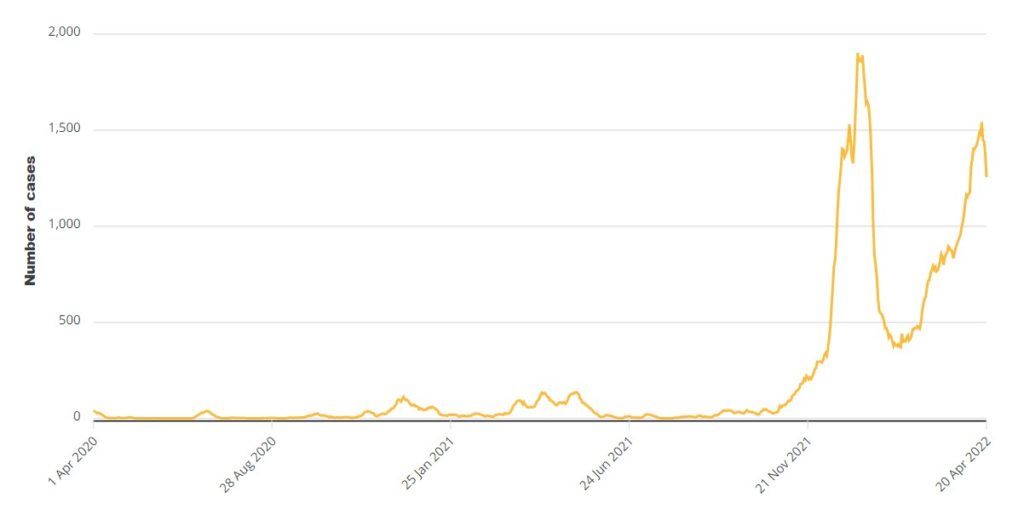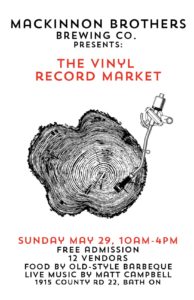It’s not that I have been doing my taxes. But I have been fretting about doing my taxes. I write this paragraph on Tuesday night watching the Mets play the Cardinals… and not doing my taxes. I can send them in as late as next Monday given the deadline is on the weekend. I will wait. I will wait and fret. I use paper. First a pencil. Then a pen. I do two versions. A draft and a good copy. Until I get fed up and just write in pen over the pencil draft. I complain. It sucks. Fanks for listening to my TED talk.*
So, now you know I live in Canada. But you did already. Lots of worse places to live I suppose. Not a lot happens here. That’s why I read and write every week about what the others out there are writing and doing elsewhere. Like this. Jeff has asked the question on many of our minds – how is Elon Musk going to screw up Twitter for beer fans:
Beer Twitter might not immediately descend into a hellscape of threats, and in fact I would instead expect it to look the same for a while—at least superficially… The effect probably would probably be measurable only in months or years, as the diversity of voices slowly waned, as people moved elsewhere. We might not see overt bullying, but instead a steadily declining richness of conversation… It may not be a popular view, but I love Twitter. I find it far more usable than Instagram, far less creepy than Facebook. It’s the site for people with opinions, and you may have noticed I have a few. But it also feels a lot more “social” than many social mediums. I discovered a whole host of new voices there, and some of them have even turned into friends. I worry about a Twitter that seems more toxic to the people I want to hear. That would make beer a lot less interesting.
I agree. Instagram and TikTok just suck. As do podcasts to a lesser degree. I like the way Twitter encourages a variety of voices, the helpful heads-ups as well as the razzing and the inebriated confessions. I now understand, for example, that there is a thing called “my X-town pizza” that is emotionally important to individuals’ identity. I also do think that Twitter users will find a way to organically work with change to keep the opinions flowing. Unless the block, report and word filter features are removed. Then it’s going to be that tire fire over at the edge of the next town that can never be put out. I am signing up for alt services just in case but don’t have any trust they will do the job.
The craft beer market is getting a bit cramped in Canada accord to The Old and Stale:
“Things couldn’t continue the way they were,” he said. Mr. Sakthivel’s experience is a microcosm of an industry that to insiders and outsiders alike can seem like an inexplicable black box, in which heavy debt loads and financial red ink are the norm yet few breweries show outward signs of trouble and there is no shortage of new entrants keen to join the fray.
I met someone working on a similar story for a similar organization recently – a well situated business writer – and he was shocked when facing craft-normal stifled responses from industry members to his simple commercial reality questions. The “sunny days” approach to beer writing and trade PR over the last decade or more has not helped the immaturity of the conversation for sure. Consolidation, the proposed reality-based response, is as old a tradition in brewing as adding hops. Likely older.
More fluidy fluid related considerations were raised late last week when Boak and Bailey asked about if it is important to know where your beer comes from, where it was brewed. I don’t think I do really but it’s not strong with me one way or the other. I wrote a comment that I might like to consider here with you for a moment… as if this was the Andy William’s show and there’s just a spotlight on him, his stool and a cardigan:
Isn’t one challenge is that beer really isn’t from somewhere in the vast majority of cases. The grain, hops, yeast and sometimes even brewing water are from sites other than and far from the brewery. The ownership and control is often not well understood or in any sense local either. There is a desire for local just as there is for “small” and “traditional” too but so often these are false claims as well. This chameleon capacity is probably one of beer’s greatest assets as long as consumers are not asked to frame their choices based on identity as opposed to loyalty or simply preference. Much of US made maple syrup is sourced in Quebec. The American made dishwasher I’m months into waiting for delivery of is made of components from Asia… which is why it’s not here. Why should beer be different now when at least 400 years ago Derbyshire malt was trundled by cart across England to make the best ales elsewhere?
What do we even mean when as ask where something is from? Is my dishwasher from where it was put in the cardboard box or where the components are from? In terms of beer, the same thing applies. Is a beer from where the packaging occurs? Where the wort is brewed? Where the malt is grown? Pretty sure ten or more years ago Quebec’s Unibroue (or a similar brewery) was trucking bulk beer (or wort) to be finished in the States where it ended up in Whole Foods (or some other chain) under a generic brand. Where was that beer from? Or should I just care that it was still tasty beer at a good price? Not unlike the questions I asked 15 years ago now (yikes!) in the post “Do We Love The Beer Or The Brewer?”
Good to see a Ukrainian charity beer being clearly actual charitable giving. 100% of sales and not profits please.
Speaking about tasty beer at a good price, The Tand himself has written about Wetherspoons but before I go there, isn’t there a prior question that needs asking? Ten to fifteen years ago beer chains were embarrassing plastic experiences that no one would consider supporting. McBeer. McGak. Which is quite an achievement, making selling gak and doing so in a way that actually further diminishes the experience down to the level of a McPigs.** That was related to the point the Tand-y-one was making:
..back to the hatred by some of Wetherspoons. What’s really behind it? Yes, they are a big company that force prices from suppliers to be lower than some would like, but unlike, say, certain other pub companies who also buy cheaply, they pass the savings on to customers. Bad people? There is undoubtedly, too, a certain snobbery aspect. This will be vehemently denied, but really, many rather look down on ordinary people being comfortable with their peers in an environment that they can afford. Better by far they should learn to improve themselves and save up to buy expensive murk in a tin shed or railway arch. That would improve the beer market and give more money to deserving brewers, rather than to the ingrates flogging to Wetherspoons.
Do we all not love a well priced pint? Like chains, over-priced beer was an outrage once upon a time. Isn’t where you brewery makes the beer very similar to which pub you go to to buy your beer? And does this relate to the integrity of the beer business or the identity of the beer buyer? I worry about people who identify too closely with the booze they drink. “I’m a rum drinker!” = “I am my own lab test’s petri dish!” I worry about that more than I worry about where the beer is from – wholesale or retail – to be honest. Also honest, however, are the let’s be looping back to sorta where we started observations from Boak and Bailey about the ‘Spoons:
We don’t tend to go to them these days, mostly because we had a run of bad experiences – poor choice, rough beer, disappointing food (even within the given parameters), poorly maintained facilities, and so on.
I have a limited experience of exactly three ‘Spoony moments but I have to admit they did seem like a shopping mall food court plus some enhanced grot and needy dipsos getting a fix. Yet… if you like the fitba terraces is it really that different?
Stan issued Hop Queries 5.12 right about 3 minutes after I posted last week and offered interesting thoughts about the next big hop with details from from an ag-productivity perspective that remind us to keep that ag-productivity perspective in mind:
Helios is approaching 20/20 territory, that is 20% alpha acids and yields of 20 bales per acre. The actual numbers are 18-21% alpha acids, 3.5-4.5% beta acids, 1.5-2% ml/100g total oil, and 3,300 to 3,600 pounds (16.5 to 18 bales) per acre. Hopsteiner does not oversell the aroma, calling it muted with soft accents. It is primarily resinous, secondarily spicy and a bit herbal. Also, and quite important, she is resistant to both downy and powdery mildew, meaning she needs to sprayed less. Her alpha to resources used ratio (granted, that’s a number I’ve never seen calculated before, although I expect we will soon) it surely top of the class.
Witness: a rather long and somewhat well put together article on a very specific complaint – some beers served too cold. Nice to see the argument being made that the full range of temps is useful depending on the style.
Further to the well above the above. Twitter. Meta. I do like the point:
IPAs are just like the deep fried Oreo of beer: it is technically/chemically overwhelming and flavorful, whereas lagers, kolsch, or pilsners are more complex and delicate and, as you say, harder to get right.
Relatedly perhaps, a classic (and perhaps generic 2019-22) brewery bio safely landed at Pellicle this week:
“We were looking to tap into a new, seemingly insatiable demand for New England-style beers as well as fill a gap in both our range and the local and regional market,” he says of Nokota. “As recently as 2018 NEIPA was not the dominant style in craft that it is today, but those soft and hazy beers were really drawing a lot of people into craft beer, and turning the heads of those who were already drinking modern beer.”
Conversely perhaps, Brian Alberts wrote a startlingly honest personal story about his Uncle Ron and how Miller High Life will always be associated with a hard part of his family’s life:
Ron passed away nine years ago, but the High Life took me a decade beyond that—before the house was eviscerated and sold, before the 2008 housing crash dragged it and Ron’s life underwater, and before I could legally drink. I was 11 again, taking a covert sip on the long sidewalk linking Ron’s construction company truck and detached woodshop with the riverfront house he’d built. I blanched, naturally, but was thrilled that he’d offered it to me while my dad wasn’t looking. At the time, this explosion of neurotransmitters was its own illicit pleasure, but in hindsight, I wouldn’t describe it as a fond memory. None of my memories of Ron are fully happy anymore. That’s partly his fault, and partly mine.
Finally, I like my local future… for it is here now. Le marché est ouvert!
There. That all offers some chewy thoughts for the coming weeks slurping. Yet for more if you need it, checking out the updates from Boak and Bailey mostly every Saturday and from Stan every Monday, plus more with the weekly Beer Ladies Podcast, and at the weekly OCBG Podcast on Tuesday and sometimes on a Friday posts at The Fizz as well. There is a monthly sort of round up at The Glass. (Ed.: that seems to be dead now.) There is more from DaftAboutCraft‘s podcast, too. And the Beervana podcast. And sign up for Katie’s irregular newsletter, The Gulp, too. And check out the Atlantic Canada Beer Blog‘s weekly roundup. Plus follow the venerable Full Pint podcast. And Fermentation Radio with Emma Inch. The AfroBeerChick podcast as well! And also look at Brewsround and Cabin Fever. And Ben has his own podcast, Beer and Badword (Ed.: …notice of revival of which has been given…) And remember BeerEdge, too, and The Moon Under Water.
*Just to be clear, this was not a TED talk. Don’t go looking for a YouTube video of me on a stage… either with the lights up standing in front of an insanely large PowerPoint behind me… or like on the Andy William’s show and there’s just a spotlight on my, my stool and my cardigan. But I do sport me a mean cardy, however. Just sayin’.
**Where I had lunch Tuesday, by the way, which makes me the biggest Fibber McFibFace on the planet.







